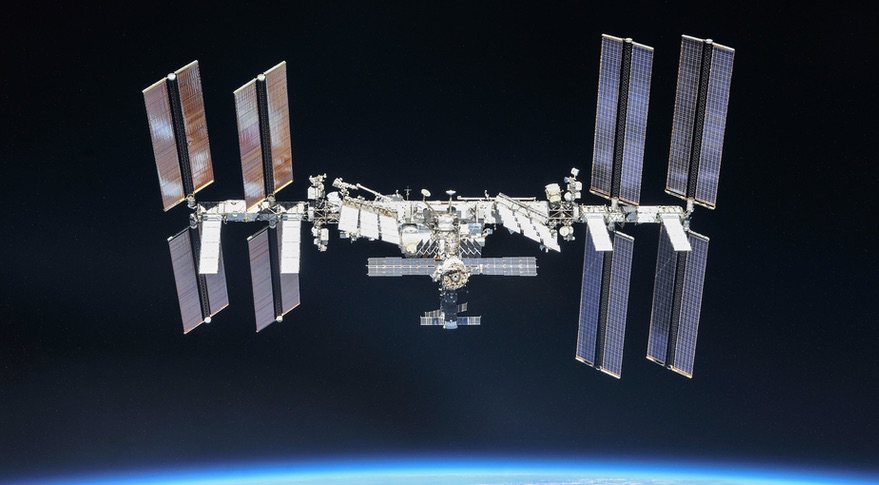WASHINGTON — NASA needs to ensure that commercial space stations are ready before the International Space Station is retired to avoid a “space station gap” with geopolitical consequences, industry officials and other advisers warn.
NASA’s low Earth orbit commercialization strategy calls for the development of one or more commercial space stations by late this decade, allowing NASA to transition research currently done on the ISS to those facilities and then retire the ISS, likely around 2030. NASA is currently evaluating an estimated 10 to 12 proposals submitted by companies seeking one of several Commercial LEO Development (CLD) contracts for initial studies of commercial stations.
That transition “will allow NASA to shift significant financial and personnel resources towards exploration objectives,” said Robyn Gatens, director of the ISS program at NASA Headquarters, at a Sept. 21 hearing of the House space subcommittee on the topic. That includes a roughly two-year transition period where NASA will shift activities from the ISS to those commercial stations.
At the hearing, another witness warned of the consequences of retiring the ISS before commercial successors are ready. “The challenge to ensure a seamless transition is more urgent today than with the shuttle time, as our reliance on space assets is far greater today and others seek to fill even the perception of any voids,” said Jeffrey Manber, chief executive of Nanoracks, a company that seeks to develop a commercial space station. “There is no room for error lest we cede leadership to other nations.”
That means in particular China, which had launched the core module of its space station that it plans to build out over the next few years. Manber warned last month that his company had already lost an unnamed customer who decided to fly a payload on that space station rather than on the ISS through Nanoracks.
“I don’t fear cooperation or competition with China,” he said, “but we cannot allow even the perception that we will cede our 20-plus years of humans working in LEO to others.” He asked the committee to support the CLD program “to ensure there is no space station gap.”
Todd Harrison, director of the Aerospace Security Project of Center for Strategic and International Studies, said China was America’s biggest competitor in space. “The real objective of this race is to see who can build the broadest and strongest coalition,” he said. “Whatever group of nations emerges as the loading coalition in space over the next decade will be the one that sets the de facto norms for space commerce and exploration that follows.”
Funding NASA’s LEO commercialization strategy has been difficult. NASA requested $150 million in fiscal years 2020 and 2021 but received only $15 million and $17 million, respectively. The agency requested $101.1 million in its fiscal year 2022 budget proposal, but a House spending bill in July offers only $45 million for the program. The Senate has yet to take up its version of a spending bill.
Rep. Randy Weber (R-Texas) questioned the pace of NASA’s commercialization program. “Isn’t NASA risking leaving low Earth orbit to the Chinese by setting up development programs to begin in a year or two?” he asked, suggesting that the agency “double down” on its existing agreement with Axiom Space, which will attach a series of commercial modules to the ISS as a step toward its own commercial station.
“We believe we need multiple paths so that we have the greatest chance of success for one or, hopefully, more commercial LEO platforms,” Gatens responded. “The Axiom commercial element on space station is one of those paths.”
She added that NASA is working on an updated version of an ISS transition plan that will be delivered to Congress in the “coming weeks,” addressing congressional concerns about a lack of details. The new report, she said, “is a much more thorough strategic and tactical plan for ISS transition,” including more details on NASA’s requirements in LEO and cost projections.
That transition plan hinges on the ISS continuing operation through the end of the decade. Recent problems on the station, including cracks in a Russian module that caused a small but persistent air leak, as well as problems with the Nauka module during its docking with the station in July, have raised doubts about the station’s long-term viability.
William Shepherd, the former NASA astronaut who commanded the first long-duration ISS expedition more than 20 years ago, said NASA needed to establish a “much more intimate working relationship with our Russian counterparts” to better understand those issues, something he said existed early in the program.
Of the cracks seen in one Russian module, he called for more work to get to the root cause of the issue. “They don’t exactly understand why these cracks are appearing now,” he said of Russian and American engineers. “I don’t think the station is in any immediate danger, but before we clear the station for another so many years of operational use, we should better understand this.”
NASA’s Aerospace Safety Advisory Panel, meeting Sept. 23, said it was also monitoring the issues with the air leaks and the Nauka docking. Members called on NASA to make sure, as it plans to extend ISS operations through the end of the decade, that it work to ensure there is no gap with any commercial successors.
“NASA should clearly communicate to industry its expectations regarding requirements and timeline, and make sure we have an overlap with the ISS,” said George Nield, a member of the panel. “Absent appropriate, timely funding, there is a risk of having a gap since the only thing that can give way is the schedule.”
